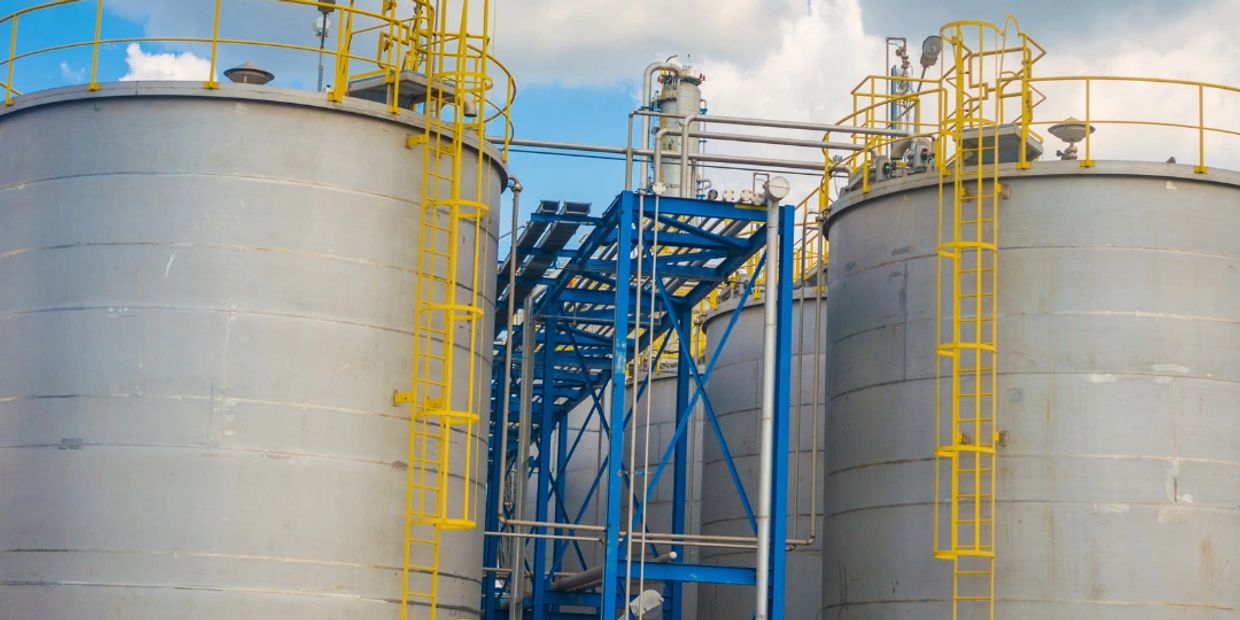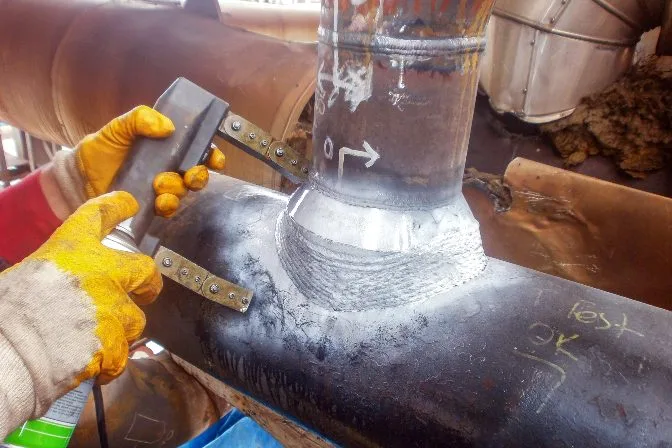Comprehending the Secret Steps in Tank Welding Inspection Procedures
Wiki Article
Comprehensive Guide to Effective Container Welding Evaluation Techniques and Ideal Practices for High Quality Guarantee
In the world of storage tank welding, extensive assessment strategies are extremely important for guarding structural honesty and making sure compliance with sector regulations. As we discover these important parts, it becomes clear that a positive inspection method is not just advantageous, yet important for functional success in environments dealing with harmful materials.Value of Storage Tank Welding Examination

Tank welding evaluation works as a preventative action, identifying potential problems such as fractures, porosity, or incorrect joint penetration prior to they escalate into major issues. Routine examinations not just abide by industry laws and requirements but also enhance the long life of the containers, lowering the demand for costly fixings or substitutes.

Visual Examination Strategies
Utilizing methodical visual examination techniques is vital for evaluating the quality and honesty of welded joints in tanks. This approach acts as the initial line of protection in determining prospective issues such as splits, damages, and inadequate penetration. The inspector should approach the task with a keen eye, utilizing appropriate tools like multiplying glasses, flashlights, and mirrors to boost exposure.Throughout the evaluation procedure, the assessor must examine the weld profile, guaranteeing it follows defined criteria and standards (Tank Welding Inspection). This includes analyzing the grain size, elevation, and fusion with the base material. Assessors should additionally pay very close attention to the bordering locations for indications of thermal distortion or contamination that may influence the weld's efficiency
Paperwork of searchings for is vital; inspectors must tape any type of anomalies, categorizing them by intensity for further evaluation. This systematic method not only aids in prompt flaw identification but additionally adds to lasting quality control by making sure conformity with sector standards. Regular training and calibration of visual examination methods even more boost the dependability of assessments, eventually bring about much safer and much more sturdy storage tank structures.
Non-Destructive Checking Methods
Non-destructive testing (NDT) methods are regularly used in storage tank welding evaluations to evaluate the honesty of bonded joints without endangering their structural stability. These methods are crucial for recognizing defects such as cracks, gaps, and additions that might cause disastrous failings if left unseen.Common NDT approaches include ultrasonic screening (UT), which utilizes high-frequency acoustic waves to discover interior imperfections; radiographic testing (RT), using X-rays or gamma rays to picture weld frameworks; and magnetic fragment testing (MT), which discloses surface and near-surface interruptions in ferromagnetic materials (Tank Welding Inspection). Liquid penetrant testing (PT) is likewise commonly utilized, with the ability of spotting surface-breaking problems by applying a fluorescent or shade contrast color
Each NDT technique has its particular applications and advantages, making it essential for inspectors to select the suitable technique based upon the product and the kind of weld being assessed. The combination of these NDT methods into the evaluation procedure enhances the general quality control framework, making certain that bonded tanks satisfy safety and security and performance requirements. Ultimately, NDT plays a crucial duty in preserving the integrity and long life of container structures in various industrial applications.

Documentation and Reporting
Making certain complete paperwork and coverage during tank welding inspections is important for keeping conformity with market requirements and promoting reliable communication among stakeholders. Appropriate documents works as a detailed document of inspection activities, findings, and any kind of restorative activities taken throughout the welding process. This information is essential not just for quality guarantee yet also for audits and regulatory evaluations.
A well-structured inspection record must consist of information such as the date of assessment, names of examiners, welding treatments employed, materials utilized, and any kind of discrepancies from established standards. Additionally, photos and diagrams can enhance the quality of the record, giving visual context to the searchings for. It is also crucial to document any kind of non-conformities along with their resolution, making certain that moved here all stakeholders are notified of prospective dangers and the actions required to mitigate them.
Additionally, keeping a centralized data source for all evaluation records enables simple access and testimonial, cultivating a culture of openness and liability. By prioritizing meticulous documentation and reporting, organizations can not only support quality assurance but additionally enhance their credibility within the market, eventually bring about boosted safety and functional performance.
Continual Improvement Practices
Constant enhancement methods are necessary for boosting the top quality and efficiency of tank welding inspections. Executing an organized technique to examine and fine-tune evaluation methodologies promotes a society of quality control within the organization. One efficient method involves routine training and upskilling of inspection employees to stay abreast of the current welding innovations and standards. website here This guarantees examiners possess the necessary understanding and skills to identify flaws accurately.
Moreover, utilizing data-driven analysis permits companies to track assessment outcomes, identify fads, and determine areas for enhancement. Utilizing tools such as origin reason evaluation can help in comprehending the underlying concerns resulting in defects, making it possible for targeted treatments. In addition, obtaining comments from inspection groups and stakeholders produces a collective atmosphere that motivates innovative solutions.
Integrating advanced technologies, such as computerized inspection systems and real-time tracking, can considerably improve the accuracy and rate of inspections. Normal audits of the inspection processes additionally add to a society of responsibility and continual refinement. Inevitably, these continuous renovation practices not just elevate the high quality of container welding evaluations yet likewise add to general operational excellence and consumer satisfaction.
Verdict
In conclusion, effective container welding inspection is critical for ensuring the architectural honesty and safety of storage systems, particularly those dealing with unsafe materials. Using a mix of visual inspection methods and non-destructive screening approaches helps with the very early recognition of problems, consequently maintaining compliance with industry standards. Additionally, robust documentation and a commitment to continual renovation enhance top quality assurance techniques. Inevitably, these procedures add substantially to look at more info functional quality and the prevention of potential security risks.Report this wiki page